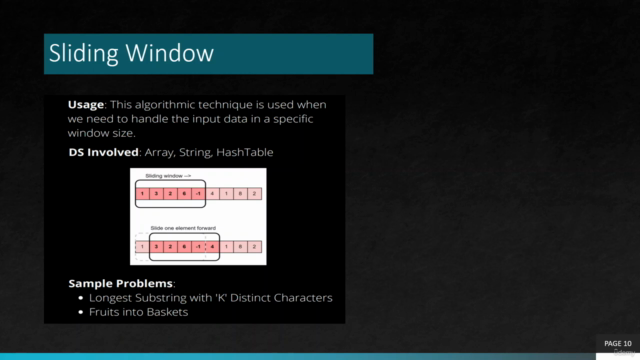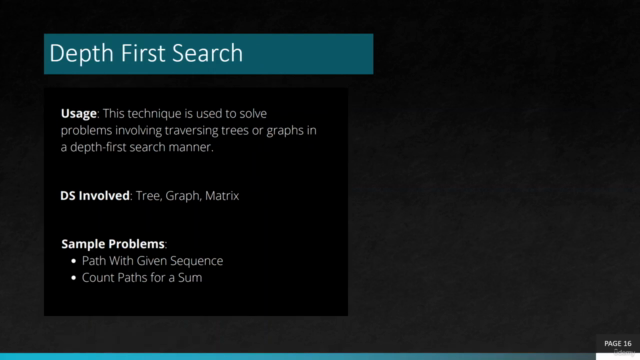Data structure and algorithms for interviews

Why take this course?
Hello! It looks like you've provided a comprehensive list of topics and problems related to coding interviews, particularly those that are part of the "Island Patterns" section on LeetCode. This section covers a variety of graph and array-based problems, including classics like the Number of Islands, Topological Sort, Depth First Search (DFS), Breadth First Search (BFS), and more.
Here's a brief overview of some of the key concepts and problems you've listed:
-
Number of Islands: This problem involves exploring a grid represented as a 2D array, where cells are either water or land. The challenge is to count the number of islands (connected land cells) in the grid.
-
Topological Sort: This concept comes into play when dealing with graphs where you have a finite set of objects and a directional relationship between each pair of objects. A topological sort allows you to list all the objects in some order such that for every directed edge uv from the set, u comes before v in the ordering.
-
Depth First Search (DFS): This is an algorithm for traversing or searching through graphs and trees. DFS can be implemented iteratively or recursively and is used in problems like finding connected components, counting islands, and solving escape room puzzles.
-
Breadth First Search (BFS): BFS is another graph-traversal algorithm that starts at the root node and explores all neighbor nodes before moving to the next level of neighbors. It's used for finding the shortest path in unweighted graphs, detecting cycles, etc.
-
Sliding Window: This is a technique for implementing a window that slides over the input data, computing a result for each position of the window. Problems like finding the maximum sum subarray of size K or the smallest subarray with a greater sum are typical examples.
-
Trie (Prefix Tree): A trie is a tree-like data structure that stores a dynamic set of strings, where the keys are usually strings. Each node in the trie represents a common prefix share by all the words stored in it.
-
Hash Maps: These are data structures used to implement associative arrays, dictionaries, hash tables, etc. They allow for fast storage and retrieval of key-value pairs and are useful for counting elements, checking for the existence of an element, and more.
-
Math Tricks: Some problems require clever mathematical tricks or observations to optimize solutions, such as using properties of prime numbers or modular arithmetic.
-
Miscellaneous: This includes a variety of other topics like binary search, dynamic programming, cyclic sort, and backtracking, which are techniques used to solve specific types of problems efficiently.
For each of these topics, there are varying levels of difficulty from easy to hard, with many intermediate level problems as well. It's great that you're looking into these problems as they cover a wide range of algorithms and data structures commonly encountered in coding interviews, especially those conducted by tech giants like Google, Facebook, Amazon, etc.
If you have any specific questions about any of these topics or need guidance on solving a particular problem, feel free to ask!
Course Gallery




Loading charts...